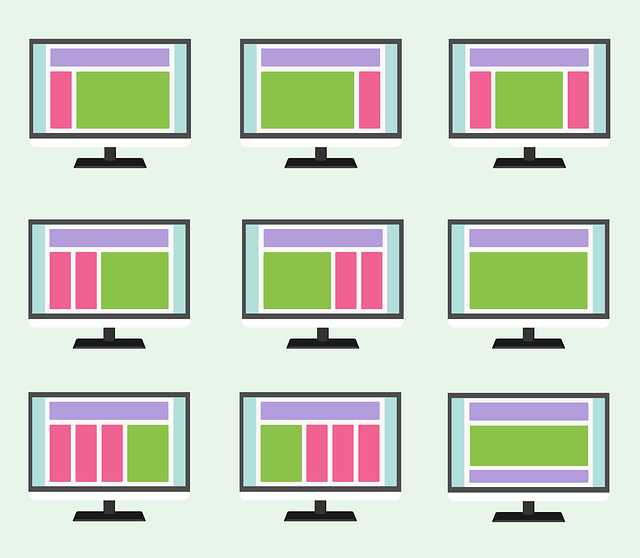Custom WordPress themes empower businesses to create unique, visually appealing online presences tailored to their brand and needs. They offer advanced functionalities, optimized performance, and plugin compatibility, enhancing user experience. The customization process involves understanding the client's brand, developing wireframes, and creating a distinct visual identity while prioritizing responsiveness and modern design trends. Choosing experienced developers is crucial. Key elements include a clean UI, well-structured layout, responsive design, and customizable options. SEO strategies integrate keywords, structured data, and optimize for speed and mobile-friendliness. Modern tools like Elementor and Divi simplify theme creation. Ongoing maintenance ensures site security, freshness, and brand consistency.
“Unleash your creativity with custom WordPress themes, transforming your website from generic to unique. This comprehensive guide explores the entire process, from understanding the basics of custom theme development to choosing the right developers and essential design elements. We’ll delve into SEO considerations, popular tools, and launch strategies. By the end, you’ll be equipped to create a stunning, optimized WordPress site that stands out in the digital landscape, showcasing your brand’s identity through compelling design.”
Understanding Custom WordPress Themes: An Overview

Custom WordPress themes offer a unique and powerful way to transform your website into a reflection of your brand’s identity. In essence, they provide the building blocks for crafting a visually appealing and highly functional online presence, tailored specifically to your business needs. By moving beyond pre-designed templates, custom themes empower users to create a distinct look and feel that resonates with their target audience.
WordPress design isn’t just about aesthetics; it’s about creating a seamless user experience. Custom themes allow developers to integrate specific functionalities, optimize site performance, and ensure compatibility with various plugins, ensuring your website not only looks stunning but also performs seamlessly. This level of customization is particularly beneficial for businesses seeking to stand out in a crowded digital landscape.
Benefits of Using Customized Themes for Your Website

Customizing your website’s look and feel with a tailored WordPress theme offers numerous advantages. One of the key benefits is the unique, professional appearance it lends to your online presence. A custom theme allows you to stand out from competitors by showcasing your brand identity in a visually appealing manner. This level of customization ensures that your website design aligns perfectly with your business goals and target audience’s preferences.
Moreover, having a customized WordPress theme provides enhanced functionality and user experience. You can integrate specific features tailored to your industry or content requirements, making your site more interactive and engaging. This level of control over the WordPress design process translates into better performance, improved loading speeds, and an intuitive interface that keeps visitors coming back for more.
The Design Process: Creating a Unique Look and Feel

The design process for custom WordPress themes is an art that involves crafting a unique look and feel tailored to the client’s vision. It begins with understanding their brand identity, target audience, and business goals. Designers leverage this knowledge to create wireframes, which serve as the structural blueprint of the website, outlining key elements such as navigation, content placement, and visual hierarchy.
This initial phase is followed by the aesthetics stage where colour palettes, typography, and imagery are carefully selected to reflect the brand’s personality. The WordPress design team ensures responsiveness, ensuring the theme looks impeccable across various devices and screen sizes. Every detail is meticulously considered to deliver a seamless user experience that aligns with modern design trends while adhering to WordPress’s robust development standards.
Choosing the Right Developers for Your Custom Theme

When it comes to crafting a unique and tailored WordPress design, selecting the ideal developers is paramount. Look for a team that specialises in custom WordPress themes, with a proven track record of successful projects. Their expertise should span not just coding but also WordPress design principles, UI/UX best practices, and an understanding of your brand’s vision.
A competent development team will collaborate closely with you throughout the process, from conceptualisation to launch. They should be adept at translating your ideas into functional code, ensuring your custom theme is not only aesthetically pleasing but also optimised for performance and search engines. A strong communication flow ensures that your WordPress design aligns perfectly with your expectations and business goals.
Key Elements of an Engaging Custom WordPress Theme

When crafting a custom WordPress theme, several key elements contribute to creating an engaging and successful design. Firstly, the theme should offer a clean, intuitive user interface that is easy to navigate, ensuring users can effortlessly manage their website’s content and settings. A well-structured layout with ample white space enhances readability and makes the site visually appealing.
Additionally, incorporating responsive design principles ensures the WordPress site adapts seamlessly to various devices and screen sizes, providing an optimal user experience across desktops, tablets, and mobile phones. Customizable color palettes, fonts, and styling options empower users to personalize their websites according to their brand identity and preferences, fostering a unique online presence.
SEO Considerations in Custom Theme Development

When developing a custom WordPress theme, Search Engine Optimization (SEO) plays a pivotal role in ensuring your website gains visibility and ranks higher on search engine results pages (SERPs). Optimizing your WordPress design involves integrating relevant keywords naturally throughout the code, from page titles and headings to meta descriptions. Utilizing structured data markup enhances search engines’ understanding of your content, leading to improved knowledge graph display.
Furthermore, custom themes should be built with a focus on load speed and mobile-friendliness, as these factors directly impact user experience and SEO performance. Efficient coding practices, optimization of media assets, and leveraging browser caching can significantly reduce page load times. Additionally, ensuring your theme is responsive ensures that your website adapts seamlessly to various devices, contributing to better rankings and higher user engagement.
Popular Tools and Resources for Theme Creation

Creating a custom WordPress theme has never been easier, thanks to the plethora of tools and resources available in today’s digital era. For beginners, platforms like Elementor and Divi offer drag-and-drop page builders that revolutionize WordPress design by enabling users to craft stunning layouts without writing code. These user-friendly interfaces streamline the process, making it accessible for folks with diverse skill levels.
Furthermore, themes like Astra and OceanWP serve as excellent starting points, offering lightweight code and extensive customization options. Their customizable designs cater to various needs, whether you’re creating a simple blog or a complex e-commerce site. With these tools at hand, navigating the world of WordPress design becomes less daunting, fostering innovation and enabling folks to build unique digital experiences.
Launching and Maintaining Your Custom WordPress Site

Launching your custom WordPress site is an exciting step, but it’s just the beginning. A well-designed WordPress theme acts as the foundation for a successful online presence. Once live, ongoing maintenance is key to keeping your site secure, up-to-date, and visually appealing. Regular updates are essential to patch security vulnerabilities and ensure compatibility with the latest WordPress versions. Additionally, backing up your site regularly protects against data loss.
Beyond technical updates, ongoing WordPress design considerations include staying true to your brand identity through consistent styling and keeping content fresh and engaging. Regularly reviewing and updating your theme’s functionality and features will ensure your site continues to meet your needs and deliver a positive user experience.
